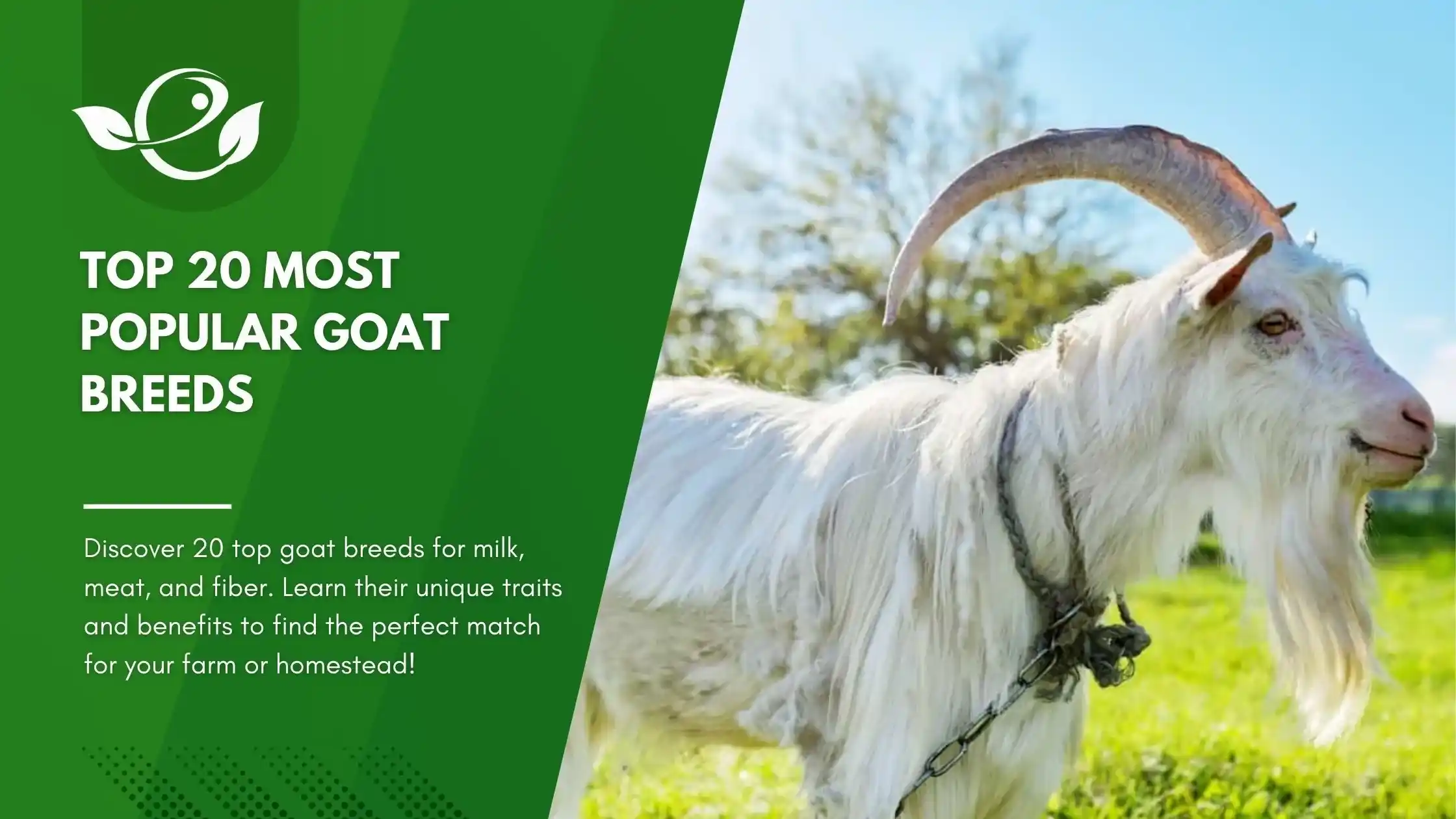Table of Contents
Goats have been a cornerstone of human agriculture for thousands of years, prized for their versatility, resilience, and diverse contributions to farming and rural life. From providing milk, meat, and fiber to serving as efficient foragers and even cherished companions, goats are among the most adaptable domesticated animals. Over time, numerous goat breeds have been developed to meet specific needs, whether for dairy, meat, fiber, or simply their charming personalities. This article explores 20 of the most popular goat breeds, each with unique traits and fascinating histories. Whether you’re a seasoned farmer looking to diversify your livestock or a beginner seeking the perfect breed for your farm or homestead, this comprehensive guide will help you make an informed choice.
What Makes a Goat Breeds Popular?
Certain characteristics make goat breeds stand out and gain popularity among farmers and hobbyists. These include:
- Adaptability: Goat Breeds that thrive in diverse climates and environments.
- Productivity: High yields of milk, meat, or fiber.
- Temperament: Docile and manageable Goat breeds are preferred.
- Versatility: Breeds suited for multiple purposes like milk and meat production.
Goats are typically categorized based on their primary purpose: dairy, meat, fiber, or pets. Let’s explore the top breeds in each category.
Top 20 Most Popular Goat Breeds
1. Nubian Goat
Nubian are dual-purpose goat breeds valued for their high butterfat milk and meat production. Originating from the United Kingdom but heavily influenced by Middle Eastern and Indian breeds, they are known for their long, floppy ears and distinct vocalizations. Nubians are social and energetic, making them a vibrant addition to any farm. Their milk is rich and creamy, ideal for artisanal dairy products like cheese and yogurt. They adapt well to hot climates but require careful management in colder regions.
Amazing Fact: Nubians are known for their distinctive vocalizations, often described as sounding like a human voice, which they use to communicate with their herd and handlers.
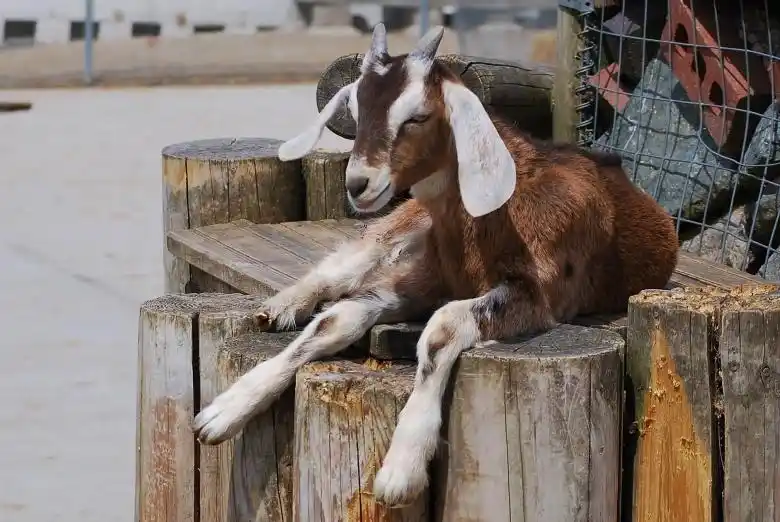
2. Saanen Goat
Hailing from Switzerland, Saanens are one of the largest dairy breeds and are renowned for their consistent, high-volume milk production. They have a calm demeanor, which makes them a favorite among novice and professional farmers alike. Saanens prefer cooler climates and are particularly sensitive to intense sunlight, requiring adequate shade. Their white coats and robust frame make them a visually striking and practical choice for dairy farming.
Amazing Fact: Saanen goats are often referred to as the “Holsteins of the goat world” due to their impressive milk production, with some individuals producing up to 3 gallons of milk per day.
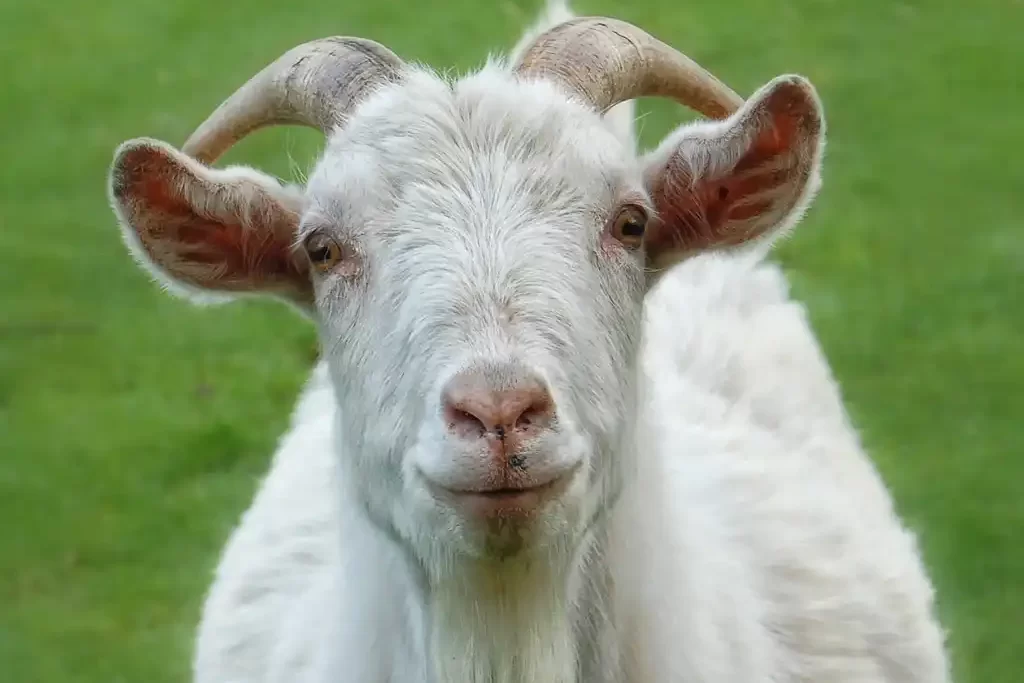
3. Alpine Goat
Alpine goats are versatile and hardy, originating from the rugged French Alps. They are medium to large-sized goats known for their adaptability to various climates and terrains. With no seasonal breeding restrictions, Alpine goats can provide milk year-round, yielding milk that is excellent for both drinking and making a variety of dairy products. Their playful nature and striking coat patterns make them a favorite on farms and homesteads.
Amazing Fact: Alpine goats come in a variety of color patterns, including cou blanc (white neck), cou clair (light neck), and cou noir (black neck), adding to their visual appeal.
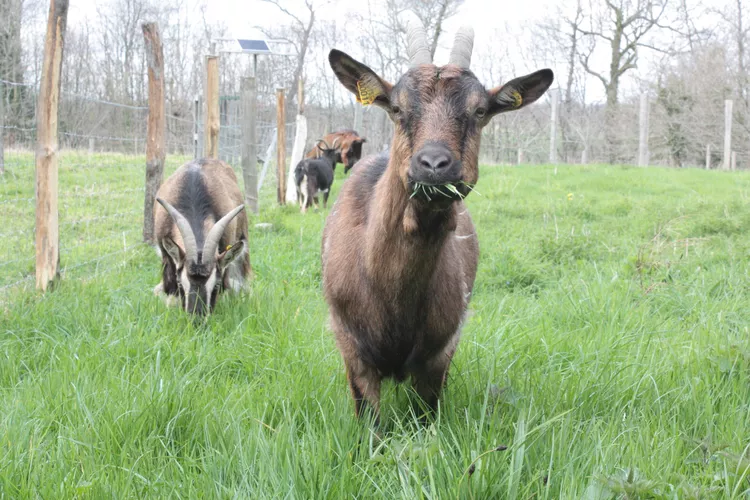
4. Toggenburg Goat
The Toggenburg goat, originating from Switzerland, is one of the oldest known dairy breeds. They are medium-sized, with a characteristic brown coat and white facial stripes. Known for their consistent milk production, Toggenburgs are particularly suited for cheese-making due to their milk’s lower butterfat content. They are hardy animals, thriving in colder climates and mountainous regions.
Amazing Fact: Toggenburgs are considered the oldest registered goat breed, with records dating back to the 1600s.
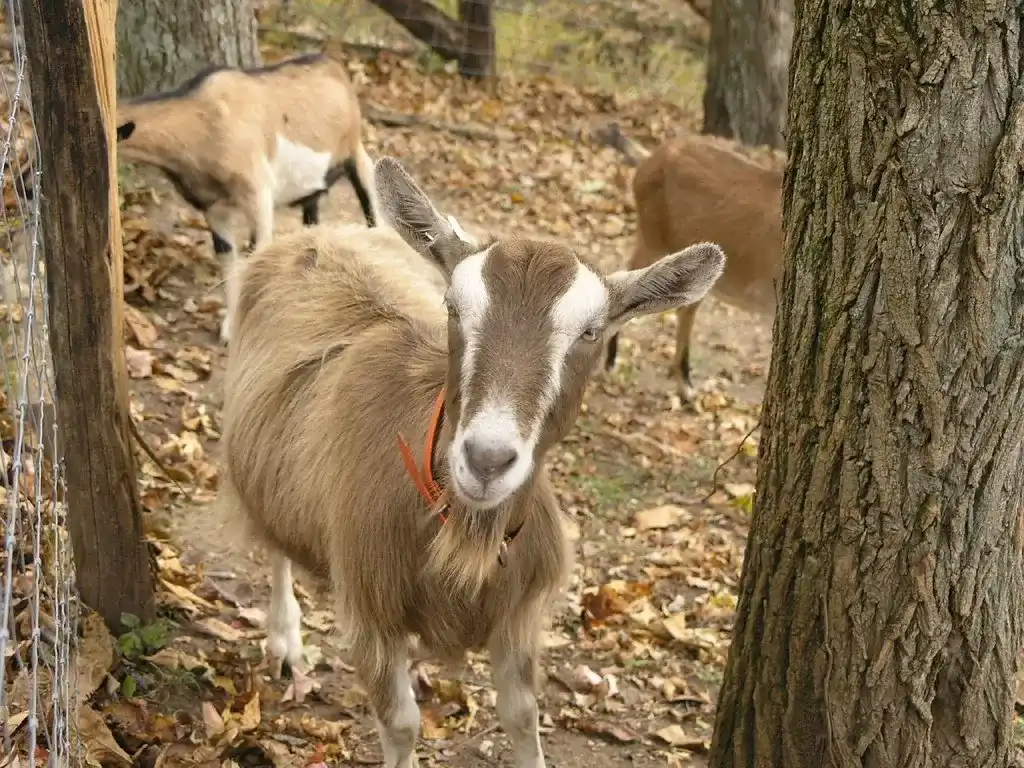
5. LaMancha Goat
LaMancha goats are uniquely American, developed in Oregon. They are instantly recognizable by their tiny, almost non-existent ears, which come in two types: “gopher” and “elf.” Despite their unusual appearance, LaManchas are highly valued for their friendly temperament and high-quality milk, which is rich in protein and butterfat. They are hardy and adaptable, thriving in a variety of climates and farming systems.
Amazing Fact: The LaMancha’s distinctive ear types are the result of a genetic mutation, and according to breed standards, any LaMancha with ears longer than 2 inches is disqualified from show competitions.
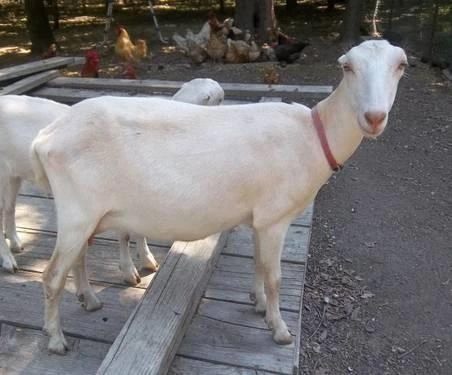
6. Oberhasli Goat
Oberhasli goats, with their distinct reddish-bay coat and black markings, originate from Switzerland. They are medium-sized and known for their docile nature, making them a favorite for small-scale farmers. Oberhaslis are reliable milk producers, and their milk is slightly sweet and highly nutritious. These goats are excellent climbers, well-suited for hilly terrains and mountainous regions.
Amazing Fact: The Oberhasli breed was initially known as the “Swiss Alpine” in the United States until the 1970s when it was officially recognized by its current name.
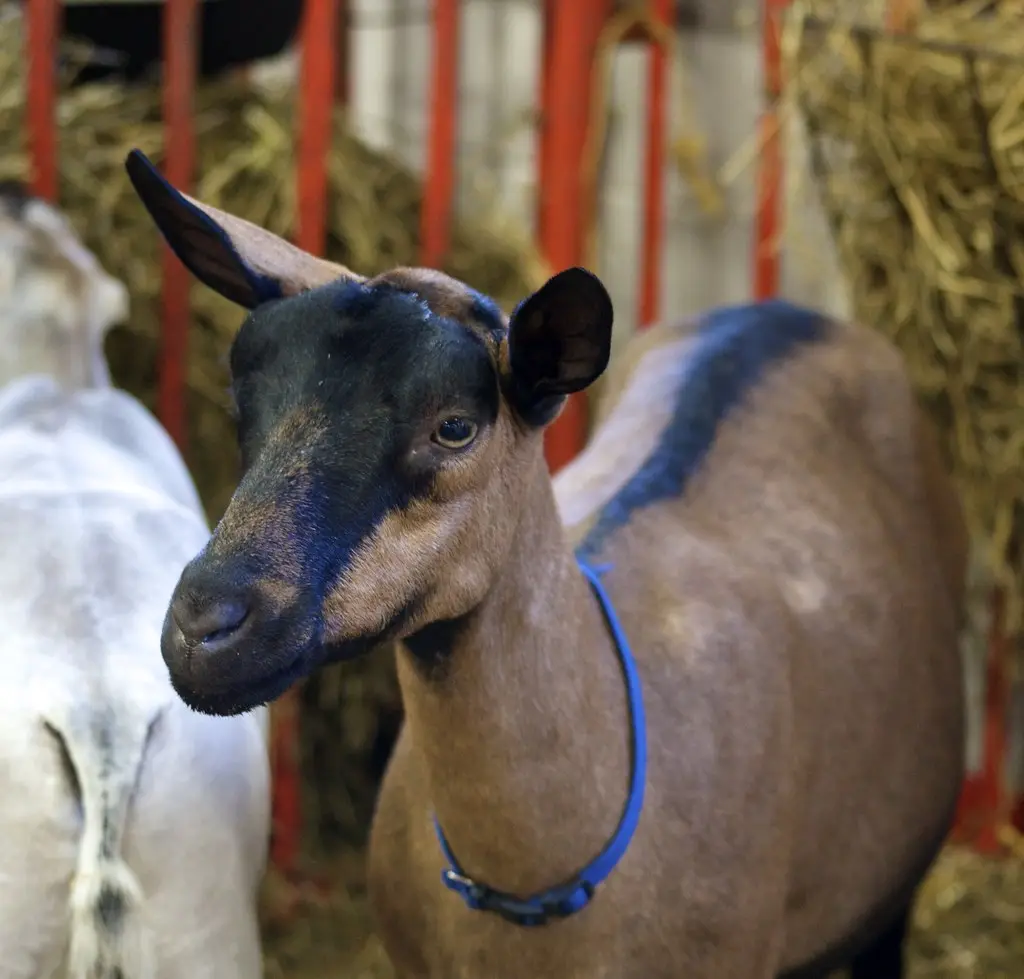
7. Nigerian Dwarf Goat
The Nigerian Dwarf goat is a miniature dairy breed with a big personality. Originating from West Africa, these goats are now beloved for their sweet temperaments and high-quality milk, which boasts exceptionally high butterfat content. Despite their small size, they produce a surprising amount of milk, making them ideal for hobby farmers and urban homesteaders. Nigerian Dwarfs come in a variety of coat colors and patterns, adding to their charm.
Amazing Fact: Nigerian Dwarf goats can produce up to 2 quarts of milk per day, with butterfat content ranging from 6% to 10%, making their milk excellent for cheese and soap making.
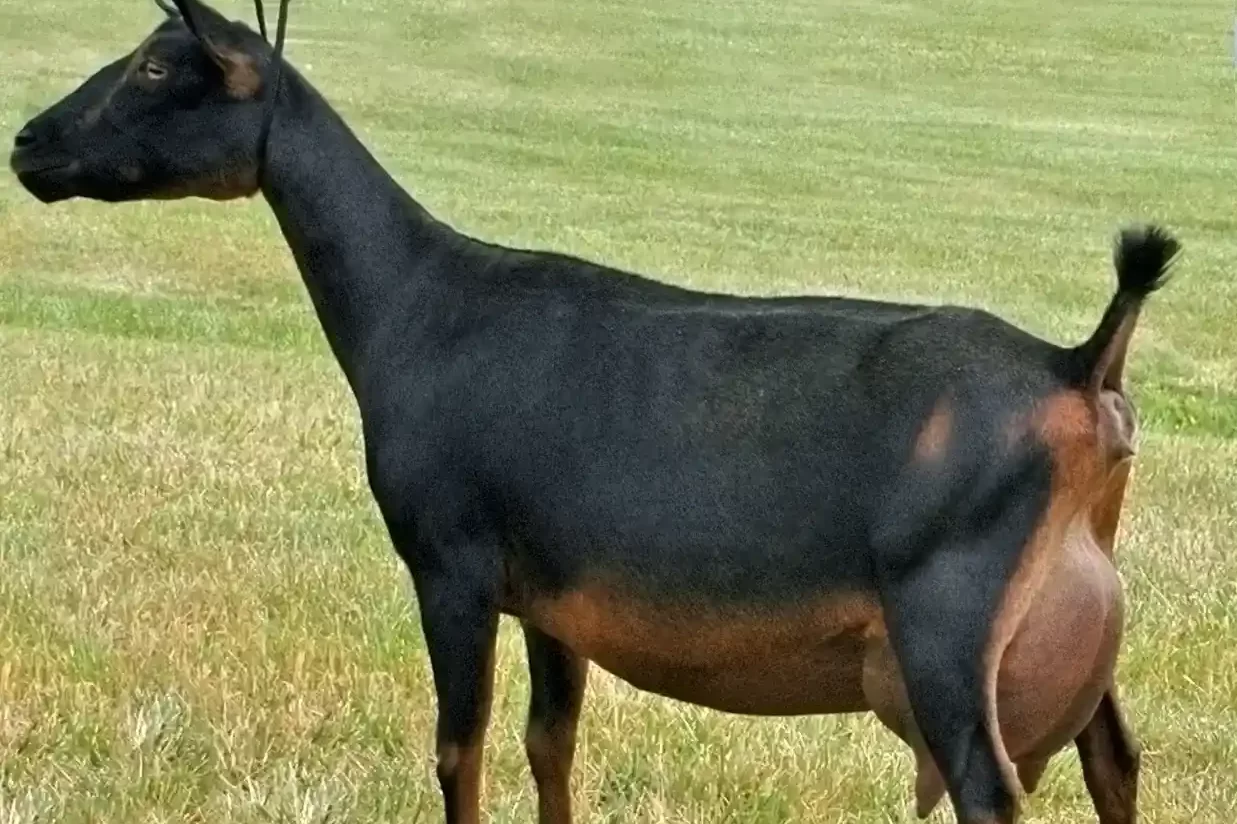
8. Boer Goat
Boer goats, developed in South Africa, are the gold standard for meat production. They are large, muscular goats with a characteristic white body and reddish-brown head. Known for their rapid growth and high fertility, Boer goats are highly efficient meat producers. They adapt well to various climates and are excellent grazers, capable of thriving on less-than-ideal forage.
Amazing Fact: Boer goats have a high resistance to disease and can gain weight at a rate of up to 0.4 pounds per day under optimal conditions, making them one of the fastest-growing meat goat breeds.
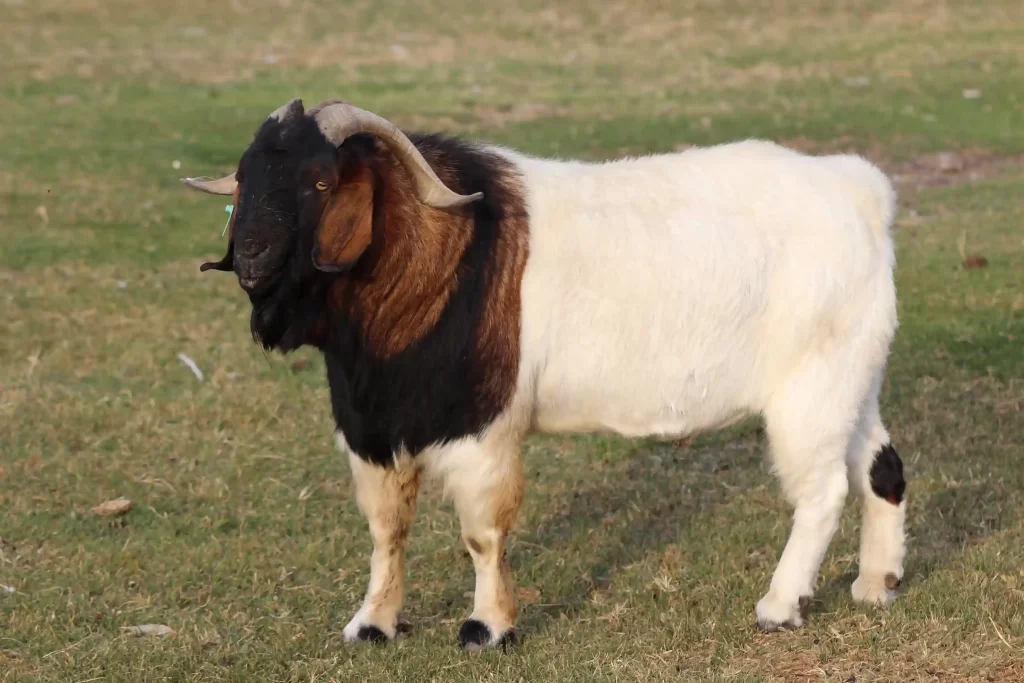
9. Kiko Goat
Originating from New Zealand, Kiko goats were developed in the 1980s by crossbreeding feral goats with dairy breeds to enhance meat production. The name “Kiko” translates to “meat” in Māori, reflecting their primary purpose. Kikos are renowned for their exceptional hardiness, rapid growth rates, and low-maintenance requirements. They exhibit strong resistance to parasites and diseases, reducing the need for medical interventions. Kiko does are prolific breeders, often birthing multiple offspring and caring for them without human assistance. Their adaptability and resilience make them a preferred choice for sustainable meat production systems.

10. Spanish Goat
Spanish goats, also known as brush or scrub goats, have a rich history in North America, tracing back to goats brought by Spanish explorers in the 16th century. These goats are incredibly hardy and adaptable, capable of thriving in harsh conditions and subsisting on low-quality forage. They are medium-sized with a wide range of colors and horn shapes, reflecting their diverse genetic background. Spanish goats are excellent for controlling invasive plant species, making them valuable for land management and restoration projects.
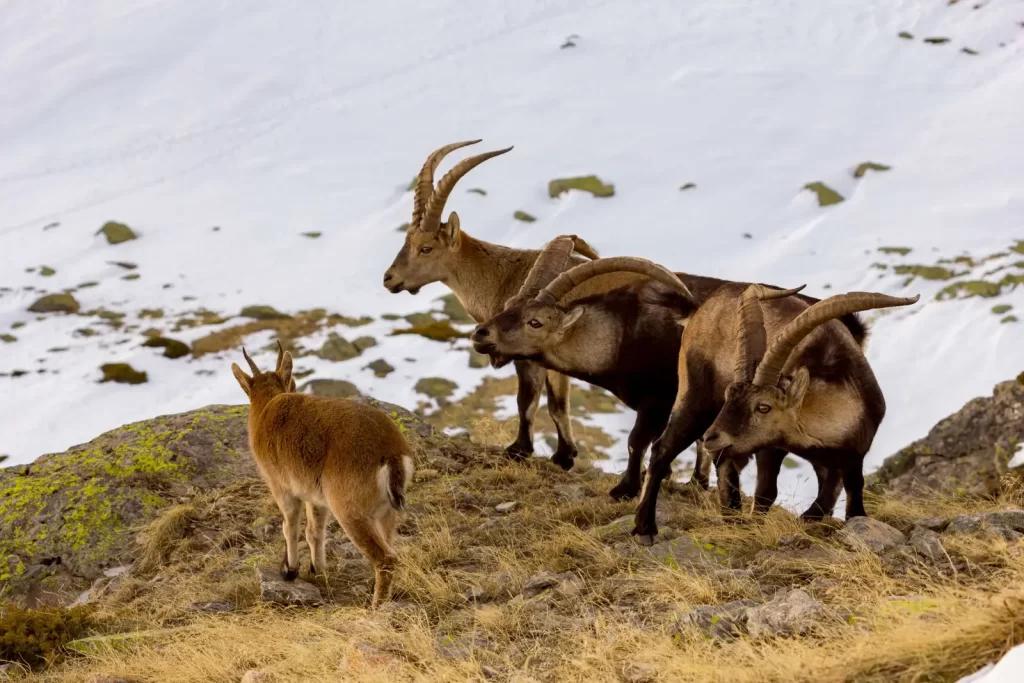
11. Savanna Goat
Developed in South Africa, Savanna goats are distinguished by their all-white coats and pigmented skin, which protect them from harsh sunlight and extreme temperatures. They are robust animals, well-suited for meat production due to their rapid growth rates and excellent carcass quality. Savannas exhibit strong maternal instincts, with does known for high fertility and attentive mothering. Their resistance to diseases and parasites, along with their ability to thrive on minimal resources, make them a practical choice for farmers in arid and semi-arid regions.
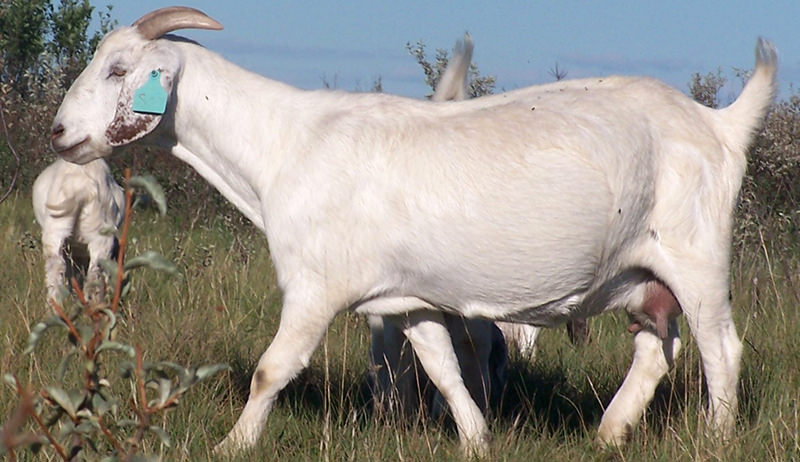
12. Myotonic (Tennessee Fainting) Goat
Myotonic goats, commonly known as Tennessee Fainting goats, possess a unique genetic trait called myotonia congenita, causing their muscles to stiffen when startled, leading to temporary immobility or “fainting.” This characteristic does not harm the goats and has been selectively bred over generations. Beyond their novelty, Myotonic goats are valued for their heavy muscling, making them excellent meat producers. They are docile, easy to handle, and less prone to escape due to their calm nature, making them suitable for small farms and petting zoos.
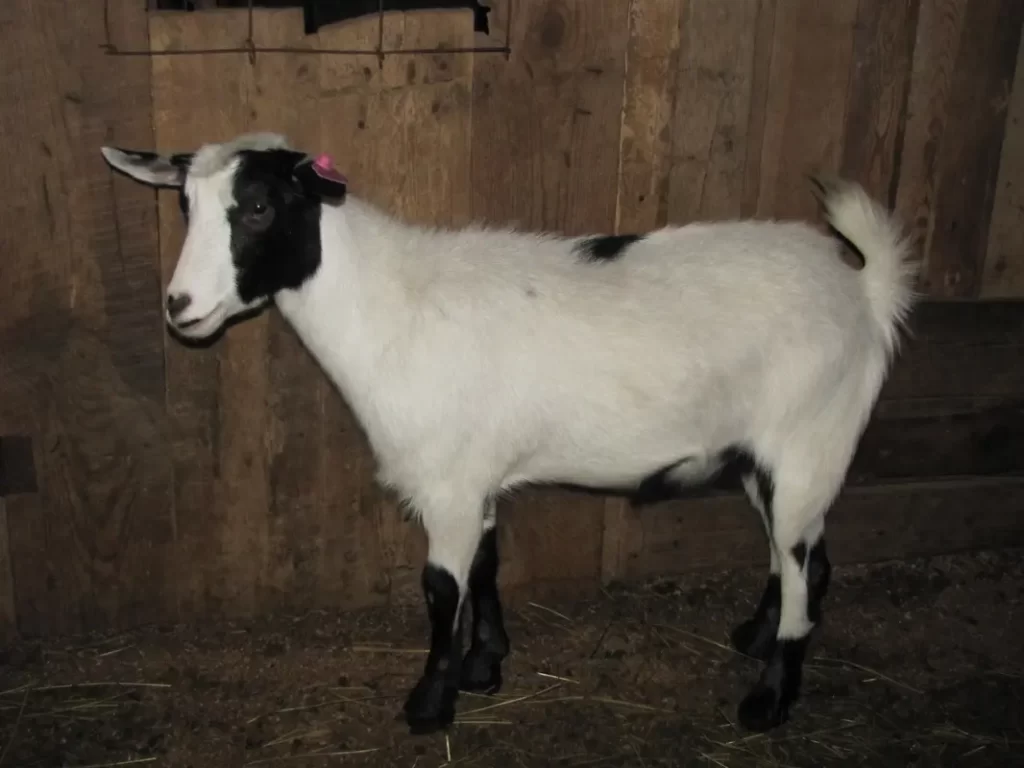
13. Angora Goat
Angora goats are the exclusive producers of mohair, a luxurious fiber prized for its luster and durability. Originating from the Ankara region of Turkey, these goats have long, curly coats that require shearing twice a year, typically in spring and fall, to maintain fiber quality and prevent matting. Their fleece grows at a rate of about 2 centimeters per month, reaching an optimal length of 12 to 15 centimeters by shearing time.
Angoras are relatively delicate compared to other goat breeds, necessitating specific care to maintain the quality of their fleece and protect them from environmental stressors. They are more susceptible to parasites, such as lice, which can negatively impact both their health and fleece quality. Regular health checks and de-lousing are essential to ensure their well-being.
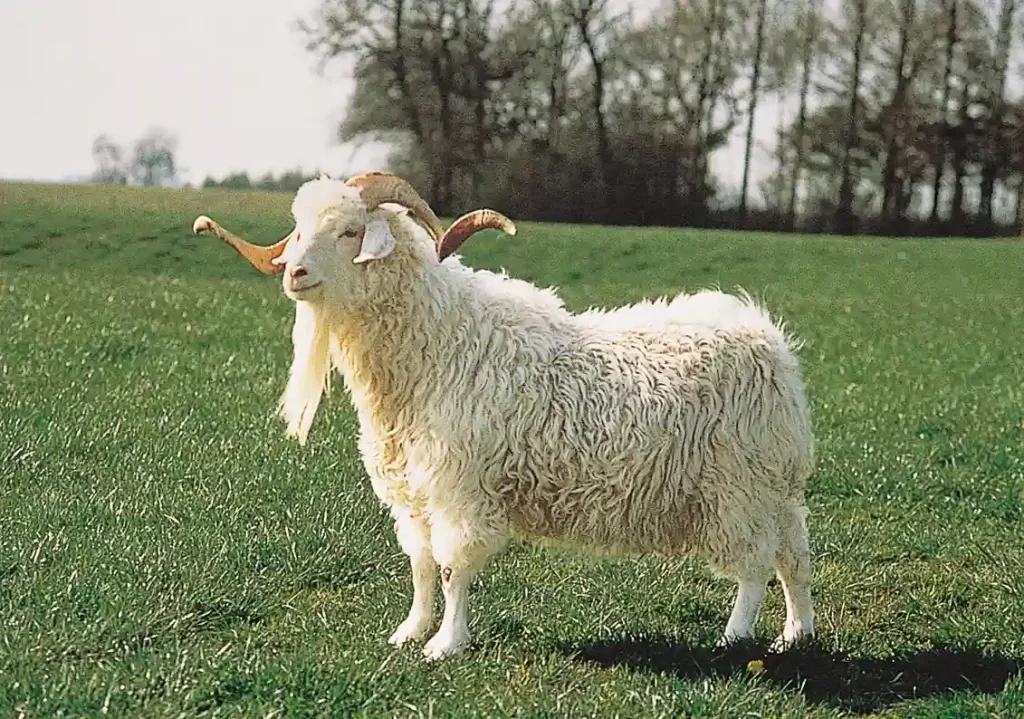
14. Cashmere Goat
Cashmere goats are not a specific breed but rather goats selectively bred to produce cashmere, the soft, downy undercoat grown to its maximum length by mid-winter and shed in early spring. This fine fiber is highly valued for its exceptional warmth and softness, with a diameter typically around 16 to 16.5 microns.
Harvesting cashmere involves combing the goats during the molting season to collect the fine undercoat fibers, a labor-intensive process contributing to the fiber’s high value. Each goat produces a limited amount of cashmere annually, often around four ounces, making the fiber relatively scarce.
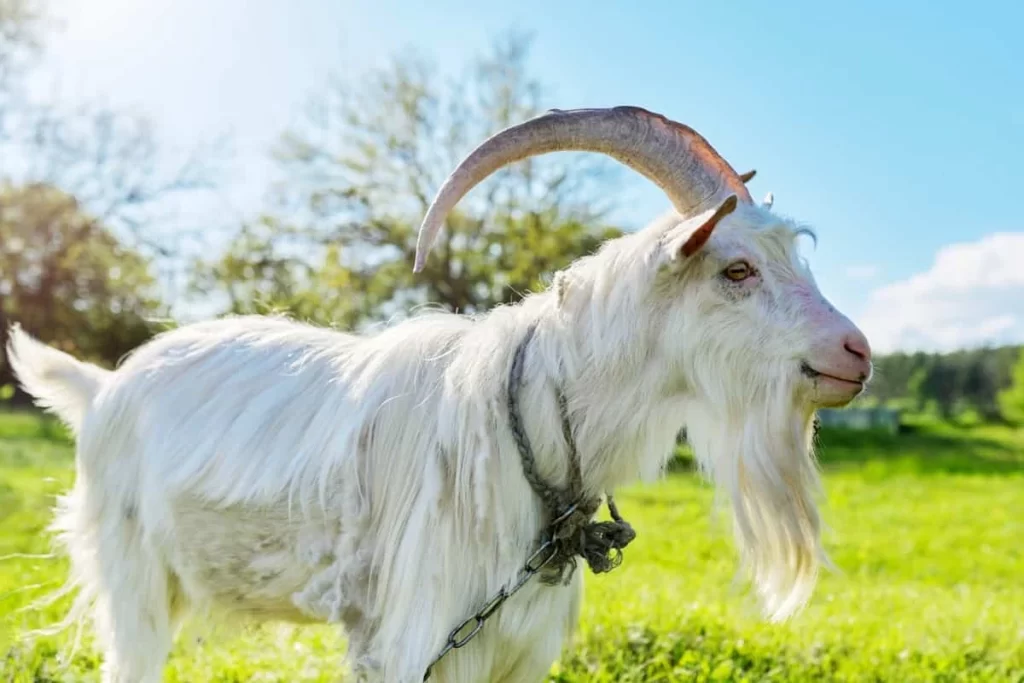
15. Pygora Goat
Pygora goats are a crossbreed between Pygmy and Angora goats, developed in the United States to produce fine fiber suitable for hand spinning. They are small and manageable, making them a favorite among fiber enthusiasts and hobby farmers. Pygoras produce a blend of mohair and cashmere-like fibers, categorized into three types:
- Type C: Fine, cashmere-like fibers that are soft and delicate.
- Type A: Long, lustrous fibers similar to mohair.
- Type B: A combination of Type A and Type C fibers, offering versatility.
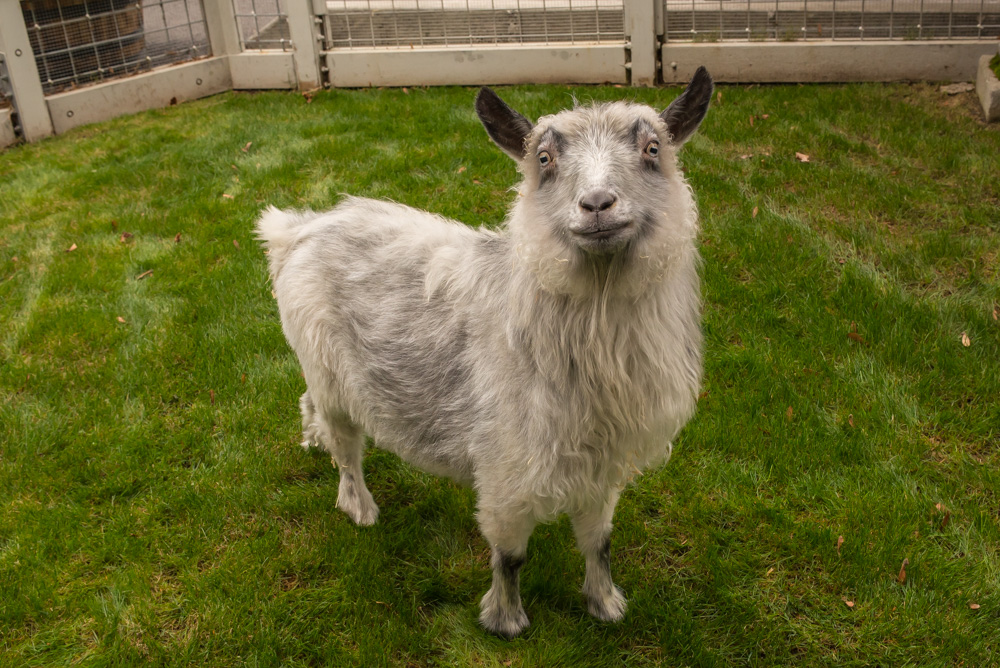
16. Jamunapari Goat
The Jamunapari goat, originating from the Indian subcontinent, is a large and elegant breed renowned for its distinctive Roman nose and long, pendulous ears. Primarily raised for milk production, Jamunapari does can yield substantial quantities of milk, rich in fat content, making it ideal for dairy products like cheese and yogurt.
In addition to their dairy qualities, Jamunapari goats are also valued for their meat, which is considered high quality. They adapt well to tropical climates and are often utilized in crossbreeding programs to enhance the size and productivity of local goat populations.
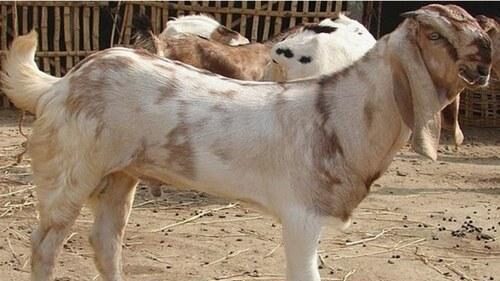
17. Beetal Goat
Beetal goats, native to the Punjab region of India and Pakistan, are versatile animals utilized for both milk and meat production. They bear a resemblance to Jamunapari goats but are slightly smaller in size. Beetal goats are known for their adaptability to various environmental conditions, making them suitable for different farming systems.
The does are prolific milk producers, with milk rich in butterfat, enhancing its value for dairy products. Beetal goats also have high fertility rates, often producing twins or triplets, which is advantageous for herd expansion.
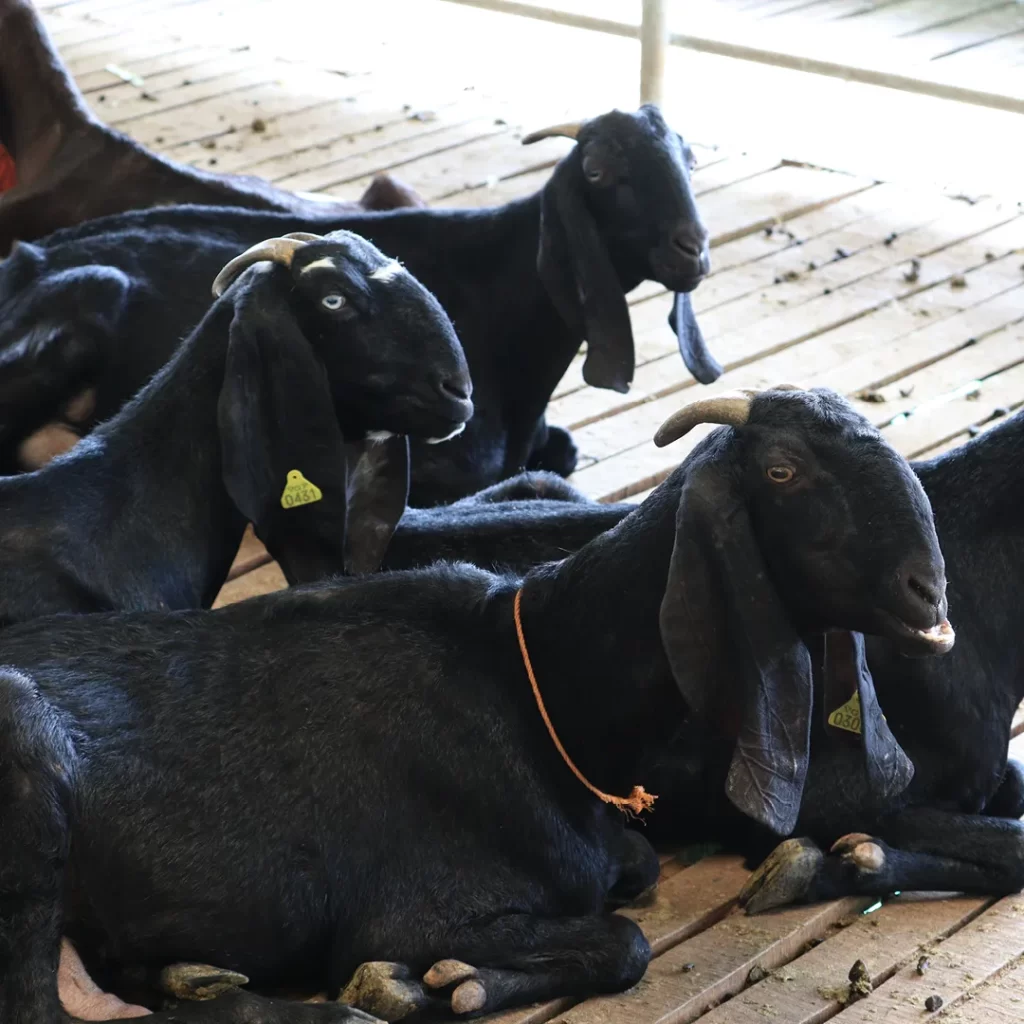
18. Kinder Goat
The Kinder goat is a relatively new dual-purpose breed developed in the United States by crossing Nubian and Pygmy goats. This crossbreeding resulted in a medium-sized goat that is both an excellent milk producer and a good source of meat. Kinders are hardy and adaptable, thriving in various climates and requiring less space and feed than larger goat breeds, which is beneficial for small-scale and urban farmers. Their friendly and curious nature makes them a delightful addition to any farm or homestead.
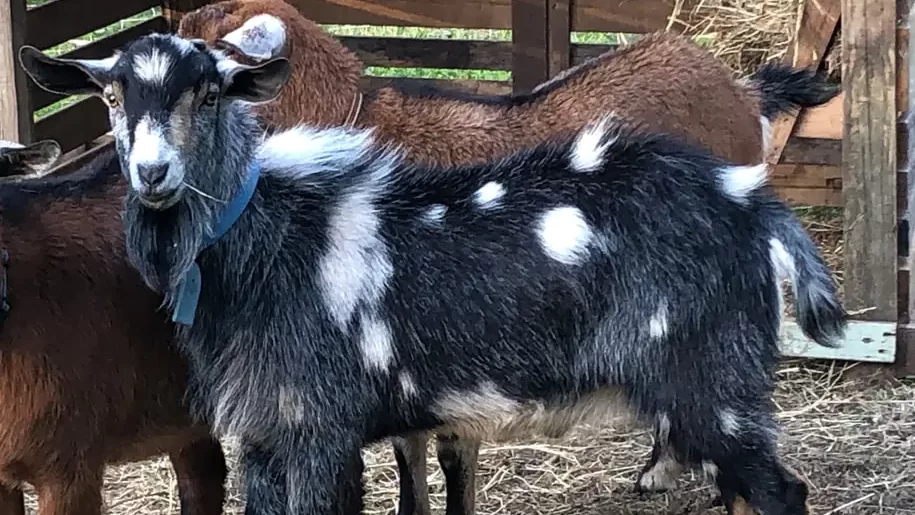
19. Pygmy Goat
Pygmy goats are small, stocky, and friendly, making them popular as pets and in petting zoos. Originally from West Africa, they are hardy and adaptable to various climates. While not primarily used for commercial purposes, Pygmies can produce small quantities of milk and meat, adding to their versatility. Pygmy goats average 16-22 inches at the withers, or shoulders, and weigh 40-70 lbs.
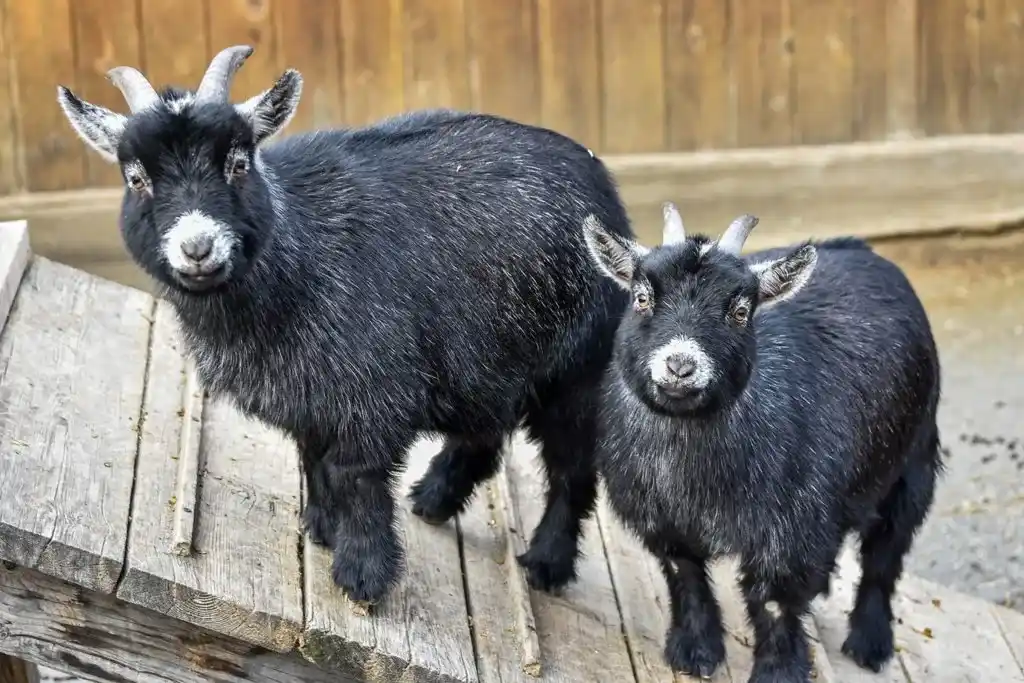
20. Kalahari Red Goat
The Kalahari Red goat was bred of native indigenous goats found in Namibia, as well as the Eastern and Northern Capes of South Africa, is known for its reddish-brown coat and exceptional meat quality. These goats are hardy and adaptable, thriving in arid and semi-arid regions. They are low-maintenance and have high fertility rates, making them a valuable asset for meat producers. For Kalahari Reds, their bucks weigh about 115 kg on average, while does can weigh around 75 kg. This weight range makes them a good choice for meat production.
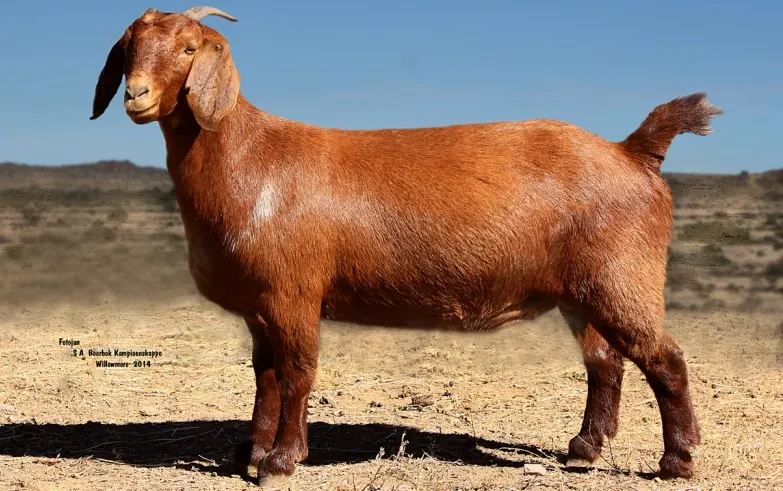
How to Choose the Right Goat Breed for Your Needs
Selecting the right goat breed depends on your goals and resources. Here are some tips:
- Determine Your Goals: Decide whether your focus is on milk, meat, fiber, or companionship.
- Evaluate Climate and Resources: Choose those goat breeds that thrive in your local environment and match your resources.
- Farm Size and Infrastructure: Ensure you have the space and facilities to accommodate your chosen breed.
- Find Reputable Breeders: Look for healthy and purebred animals from trustworthy breeders.
That’s It
The world of goat breeds is as diverse as the roles these animals play in our lives. From the luxurious mohair of the Angora to the high butterfat milk of the Nigerian Dwarf, and from the hardy Boer meat goat to the brush-clearing prowess of the Spanish goat, each breed brings something unique to the table. Understanding the characteristics, care requirements, and amazing traits of these goats can help you select the breed that best suits your needs and environment.
By choosing the right goat breed, you’re not only enriching your farm or homestead but also contributing to the preservation of these remarkable animals and their invaluable contributions to agriculture. Whether for production, companionship, or both, there’s a goat breed out there waiting to enhance your life.
